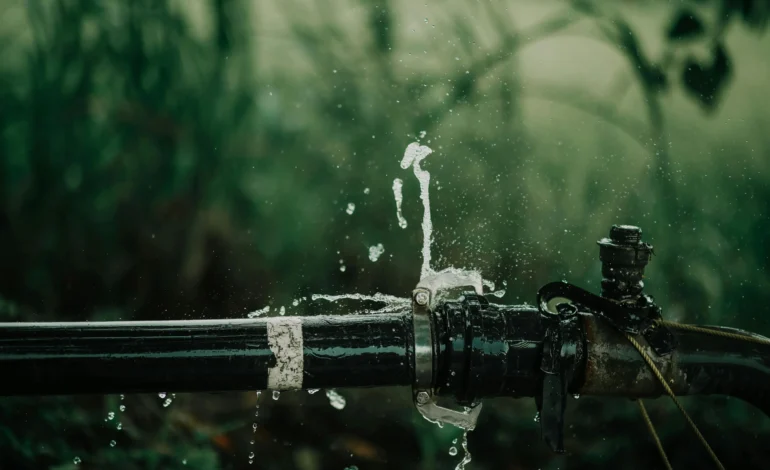
How to Handle Those Unexpected Plumbing Surprises
Plumbing problems at home often show up when you least expect them. One minute, everything’s fine, and the next, there’s a puddle forming under your sink or a strange sound coming from the wall. These situations can be frustrating, especially when you’re unsure of the cause or what to do first.
The good news is, with a few basic steps, you can stay calm and limit the damage. Whether you’re dealing with a small issue or something more urgent, this guide walks you through how to respond quickly and safely when water starts showing up where it shouldn’t.
Table of Contents
Spot the Signs Early
The sooner you notice something unusual, the better. Watch for water stains on walls or ceilings, soft spots in floors, or a sudden drop in water pressure. Strange noises behind walls or gurgling sounds from drains can also be early indicators of a problem. A higher-than-normal water bill might be another clue. These signs don’t always mean there’s a serious issue, but catching them early gives you a better chance of fixing things before they get worse.
Know What to Do First
When water starts dripping, many people freeze up. It’s important to stay calm and take quick action. First, stop using any affected sinks or fixtures, then assess the situation to see where the water might be coming from. If you’re wondering what to do about leaky pipes, experts suggest turning off the nearest water valve or, if needed, shutting off the main water supply. Contain the leak using a bucket or towels and avoid using nearby fixtures. Call professionals like the Clean Plumbers to inspect the issue and avoid further damage.
Shut Off the Water Supply
Knowing where your water shut-off valves are can save you time and money. Every home has a main shut-off valve, often located near where the water line enters the house. Some sinks and toilets also have individual shut-offs. Turning off the water quickly can prevent further damage in a sudden water issue. Labeling these valves ahead of time is a good idea, as well as ensuring they’re easy to reach. This simple step makes emergencies easier to manage and can help avoid more costly problems.
Contain the Water and Protect Your Belongings
Once the water is stopped, your next step is to protect anything nearby. Use towels or buckets to catch drips and stop the spread. Move items like furniture, electronics, or rugs out of the area. Place something under the affected ceiling if the leak is above a room. Keeping the area dry helps avoid mold growth or staining. Even a small leak can cause damage if it spreads. Quick action makes cleanup easier and reduces the risk of lasting damage.
Avoid Using Other Fixtures Temporarily
If water is coming from one part of your home, it’s best to avoid using nearby sinks, showers, or toilets until the issue is fixed. Pressure changes or shared connections can make things worse. Give the system time to settle and wait for a plumber to inspect it. Using the water too soon might cause new leaks or push debris into other areas. It’s a short wait that could prevent bigger issues later.
Don’t Reach for Harsh Chemicals Right Away
Grabbing a drain cleaner bottle is tempting when something backs up. However, many of these products contain strong chemicals that can damage your pipes over time, especially in older homes. Instead of pouring chemicals down the drain, try a natural mix of baking soda and vinegar followed by hot water. This can clear light clogs safely. If the problem continues, it’s better to call a professional. Repeated use of harsh products can weaken your system and create bigger issues later on.
Document the Damage
Take clear photos or videos of any visible water, stains, or affected areas. If the issue leads to repairs or insurance claims, having a record will be helpful. Include shots of where the water came from, any personal items damaged, and how far it spread. This also helps when explaining the issue to your plumber or maintenance provider. Documenting the situation gives you peace of mind and ensures nothing important gets missed during repairs or follow-ups.
Check for Mold or Moisture Later On
Don’t assume everything is fine after the leak is fixed and the area looks dry. Moisture can remain hidden in walls, under floors, or inside cabinets. Over time, this can lead to mold growth, which affects air quality and can cause health problems. Check the area over the next few days for any musty smells or damp spots. A moisture meter can help or ask your repair expert to double-check. Catching leftover moisture early prevents additional damage.
Learn Preventative Tips for the Future
Once everything is back to normal, take time to understand how to prevent the same problem. Avoid flushing wipes or paper towels. Use drain covers to catch hair or food scraps. Insulate exposed pipes if you live in a colder climate. Schedule occasional inspections or ask for advice during your next service call. Small habits go a long way in keeping your system running smoothly. The goal is to stop problems before they start.
When to Call the Pros
Some repairs are best left to licensed experts. If a leak continues, you see water stains spreading, or the problem returns, call a professional. They have the tools and experience to find and fix the root cause properly. Trying to handle it on your own might make it worse or lead to more expensive repairs down the line. Don’t wait too long—early action saves time, money, and stress in the long run.
Dealing with unexpected water issues can feel overwhelming, but knowing what to do helps you stay in control. You protect your space and avoid bigger damage by spotting signs early, shutting off the water, and calling in help when needed. A calm, smart response makes all the difference. Whether it’s a small drip or something more serious, being prepared goes a long way. Keep this checklist handy, and you’ll be ready the next time water shows up where it doesn’t belong.





